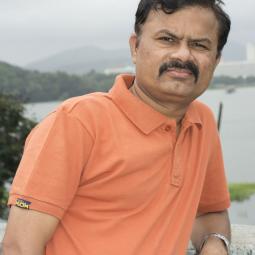Biografia
Born in 1972, L. R. Patil graduated from Sir J.J. School of Art, Mumbai in 1994 with a Bachelor of Fine Arts. He received the Maharastra State Award in 1990 for Landscape Painting and the K.K. Hebber Foundation Scholarship in 1994. In 1994 he also received the Camlin First Prize for the Final Year Annual show at Sir J. J. School of Art Mumbai. In 2000 he was awarded the Bombay Art Society Prize by M/S Hindustan Pencil Ltd.
His prominent solo shows were in 2005 at the Jehangir Art Gallery, Mumbai and in 2008 at Fine Arts Faculty, Baroda. He has also participated in several group shows and art camps. In 2009 he received a Post graduate Diploma in Indian Aesthetics from Jnanapravaha, Mumbai India.
My work deals with the issues of human desires. It expresses a feeling about the absence of humanity and human weakness, about greed and anger and dissatisfaction. The corroded metal becomes a metaphor for the erosion of human values. It has become an essential feature of my mixed-media work.
The use of photography and re-painting, welding, re-composing has become a part of my artistic process. Intuition a great role in perceiving everyday objects and tools and substituting their form for a function that serves to depict a part of the human body or the whole body.
I want to work more in photography and video as my medium, but would like to continue with painting and drawing too, as they are equally expressive mediums. Meeting and seeing new art, new artists and experiencing a different culture would definitely help me in the evolution of my art practice. Sculpture is an area which I feel the need to explore even more.
Life around me and my existence as an individual compel me to reinvent and establish for myself a methodology to deal with different aspects of my life and artistic journey. Social, political and cultural conditioning has led my work in a particular direction.
I find myself as an artist now wanting to explore more areas through an exchange of ideas. I want to share my experiences with others from different cultures and examine the differences and similarities among them.






